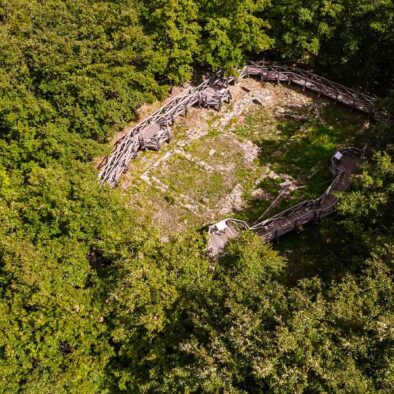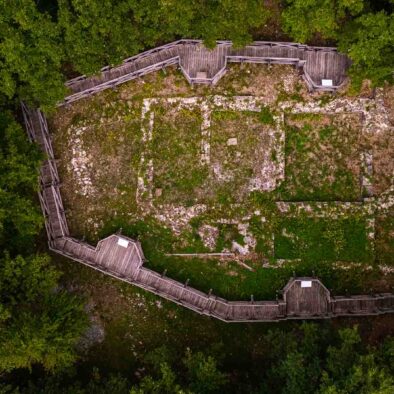Tea hospital
Near the Tea prairies, in a strategic place of passage, called La Foce, according to legend, by will of Matilde of Canossa, a hospital was built in the 11th century to shelter travellers. At first it was just a small church with an apse and an annex, probably very linked to pilgrimages, but certainly already used by merchants, carriers and caravan drivers. Then that church ruined, for unknown reasons (an earthquake, a landslide or perhaps some historical cause).
Later, in the 13th century (the first documentary mention of a Hospitale Tade is from that century) new needs, this time more linked to trade from Lucca, required the reconstruction of a hospital structure. And a new large multi-storey room building arose where goods, livestock and travelers could find shelter. The church of S. Nicolao was incorporated into it.
That step must have been frequented if, in the following centuries, and specifically in the 15th century, the hospital underwent a new phase of expansion which determined its very considerable size, with a rectangular plan, one side of which exceeded 20 metres. It was therefore a tool used by many travelers and goods caravans, indicative of lively and widespread trade. Then, with the 16th century, the decline began and, at the end of that century, a map already speaks of the ruins of S. Nicolao. The hospital and the pass had lost importance and the process of authentic disappearance of the building had begun. In fact, until a few years ago, no one knew where that hospital that was so important in the past was.
It was in 1996 that the archaeologists directed by prof. Antonio Quiros Castillo began surveys and excavations in the area and identified the ruins during the first campaign. Since then, in 1997 and 1998, excavations continued, bringing to light the ancient medieval hospital of S. Nicolao di Tea. The excavation represents one of the first archaeological investigations of mountain pass structures in Italy and the first in Tuscany. The road system highlighted in the area is of exceptional importance as it forms a radial network of roads towards Emilia, Tuscany and the Tyrrhenian-Ligurian Sea. This junction referred to the sorting of the flows of travelers also towards the great medieval European pilgrimage destinations and therefore, from the Po Valley, from the Garfagnana and from the Lunigiana, towards Rome and Santiago de Compostela (in Luni, in fact, the Camino de Santiago met with the via Francigena). The flows towards Lucca and the extraordinary relic of the Holy Face also passed through this pass in both directions (for this reason this road was called Via del Volto Santo).





